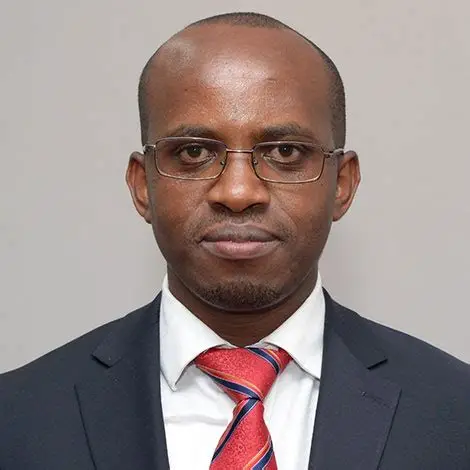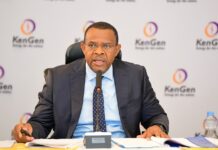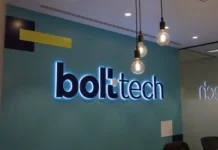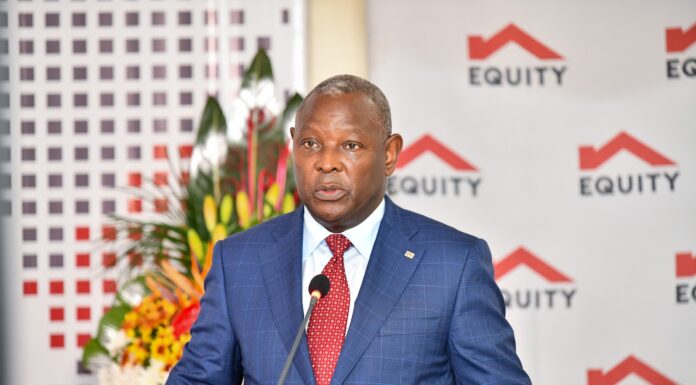By Amos Wachira
In the industrial hub of Athi River, Machakos County, a quiet revolution is brewing. It doesn’t rumble like a diesel generator nor flicker like a kerosene lamp. Its potential energy is stored in invisible molecules, harnessed from one of nature’s abundant natural gifts: hydrogen.
This is the frontier where Safer Power, a homegrown green energy company, is staking its claim, betting big on green hydrogen to redefine the nation’s energy security and industrial future.
Founded in 2016, Safer Power is a fully registered and licensed Engineering Procurement and Contracting firm dealing with key projects like Solar, power and energy projects and medium to big size HVAC projects.
As the world shifts toward clean energy to combat climate change, green hydrogen, a cleaner and more sustainable alternative to fossil fuel-based energy, has emerged as a game-changer; and Safer Power is among the early proponents of this revolution in Africa.
“We looked at why green hydrogen was not peaking in Europe and America,” explains Dalmus Mbai, founder and Chief Executive at Safer Power Group. “The cost of production of green hydrogen should be low. With large tracts of land where we can harness the power of the sun to produce hydrogen, Africa stands at a unique position as it can produce green Hydrogen cheaply.”
Safer Power, a renowned name in Solar energy is dreaming and actualizing a future that will harness the power of Hydrogen.
What is Green Hydrogen
Hydrogen itself is nothing new. It’s the universe’s most abundant element. The crucial differentiator is how it’s produced. “Grey” hydrogen, the dominant form today, is extracted from natural gas, releasing vast amounts of CO2. “Blue” hydrogen captures some of that CO2, but it’s still fossil-fuel dependent. Green hydrogen, however, is produced by splitting water (H2O) into hydrogen and oxygen using electricity generated entirely from renewable sources – solar, wind, hydro, or geothermal. The only emission? Pure oxygen.
For decades, Kenya’s energy narrative has been a complex tapestry woven with threads of hydropower vulnerability, geothermal promise, and the persistent shadow of expensive, polluting fossil fuels, especially for heavy industry and transport. While significant strides have been made in renewable electricity generation with geothermal and wind leading the charge, decarbonizing sectors like steel, cement, fertilizer production, and long-haul transport remains a colossal challenge. Enter green hydrogen – not just as a global buzzword, but as a tangible solution being forged on Kenyan soil by Safer Power.
Led by a Kenyan team combining deep industrial expertise with international energy acumen, Safer Power emerged not just to import a technology, but to indigenize it. Their vision is audacious: to make Kenya a leader in green hydrogen production and utilization within Africa, driving decarbonization, enhancing energy security, and creating high-value jobs.
Kenya imports millions of dollars worth of fossil fuels every year. This drains foreign exchange, exposes the country to volatile global prices, and pollutes the environment.
“Green hydrogen, produced using our own sun offers a pathway to true energy sovereignty. It’s not just about being green; it’s about being economically resilient and industrially competitive,”explains Mbai during an interview at their headquarters.
Safer Power is moving beyond vision into concrete action.
They are actively developing a commercial-scale green Hydrogen production facility. Safer Power’s primary focus is in sectors where green energy can make a big economic impact.
With Green Hydrogen, Safer Power will be exploring derivatives for cleaner industrial heating and reliable backup power solutions beyond diesel generators.
They will also play a significant role in providing clean feedstock for fertilizer production through the use of green ammonia.
Mr Mbai says green Hydrogen could bring endless possibilities, like use of hydrogen fuel cell to power electric trucks, buses, and potentially locomotives for long-distance freight for the first time in Kenya. Notably, the transport industry is a known major source of emissions and particulate pollution.
“Green Hydrogen has three pronged benefits: It gives us power, hot water and green Ammonia which is made from a combination of nitrogen and oxygen. This green ammonia could be used in our farms to preserve our soils.”
For any trailblazer, building an ecosystem is one of the most crucial part of the journey as it helps them forge a sustainable way forward.
Safer Power understands that pioneering requires more than just production. They are actively engaging in technology partnerships, collaborating with global green Hydrogen players and engineering firms, but with a strong focus on knowledge transfer and local capacity building.
Top on their priority list are partnerships with Hydrogen fuel cell manufacturers.
“Most people who were not feasible for renewable energy can now be supported using fuel cells on site and generation of green Hydrogen off-site.”
Another key cog in their Green Energy wheels is Off-taker Agreements.
Mr Mbai says the company is actively securing commitments from forward-thinking Kenyan industries eager to decarbonize their operations and secure stable, long-term energy savings. These include their customers who have already installed solar systems.
Understanding the power of collaboration, Safer Power works closely with government agencies like the Energy and Petroleum Regulatory Authority (EPRA) and the Ministry of Energy to shape regulations, safety standards, and incentives for green Hydrogen.
The company believes a Green Hydrogen future is within reach and Kenya is ripe for it. This is why it invests in training programs to cultivate the next generation of Kenyan hydrogen engineers, technicians, and safety experts.
Safer Power’s inroads into green hydrogen comes after years of preparation, concept building, testing and future-proofing.
For a start, the company had to install capacity in fabricating electrical components that were previously imported into the country, including switchboards, control and synchronization panels, motor control panels, meter boards, distribution boards, generator synchronization panels, battery racks, street lighting poles, high mast street light poles.
“We have a sheet metal factory and a panel building and assembly workshop that is fully licensed by Schneider Electric where we assemble our own control panels and related components,” says the Safer Power founder.
For many years, Safer Power has build it’s name in Solar energy, supplying energy solutions including solar panels, inverters and batteries to a diverse domestic and industrial clientele.
Recently, the company has morphed into an integrated Solar energy plant installer with a number of big photovoltaic projects under their belt.
These include an innovative 800kWp Photovoltaic system for Del Monte Kenya, and a Solar Photovoltaic plant with energy storage system of 100kWp and a 630A Low Voltage Board with a 80kVa capacity for Kingston Beach Hotel.
They have also completed and commissioned energy projects at Konza City, EPZA, Ghana High Commission, Kenya Ports Authority, Stoni Athi Resort, CBK Pension towers among others.
Having helped companies and industries go green, the next frontier for Safer Power heralds a new exciting chapter.
The odds are already favoring their green hydrogen aspirations.
Firstly, Kenya’s potential as a green hydrogen powerhouse is exceptional. Blessed with some of the world’s highest solar irradiance, Kenya boasts a clean electricity potential poised for massive exploration and expansion.
Secondly, the country ‘s strategic location is a positive factor.
Positioned as an East African hub and gateway, Kenya can serve both domestic demand and potentially export green hydrogen derivatives like ammonia or synthetic fuels to regional and international markets. Safer Power looks to harness this advantage to supply the country and it’s neighbors with green hydrogen and its derivatives.
The policy momentum only asserts the fact that the country is ready to explore the prospects of Green Hydrogen and Safer Power will be among the frontrunners to realize this dream, according to Mr Mbai.
The Kenyan government’s commitment to clean energy, evidenced by ambitious targets in the Green Hydrogen Strategy and Roadmap 2023 creates a supportive, though evolving, regulatory landscape.
The implications of Safer Power’s mission extend far beyond the production of a clean fuel.
Establishing a green hydrogen industry creates high-skill jobs in engineering, manufacturing, plant operation, and logistics. It attracts significant foreign direct investment aligned with global decarbonization trends. Local manufacturing of components creates jobs.
“We are bridging the renewable energy gap by bringing affordable solutions closer to our people,” says Mr Mbai.
Safer Power will be manufacturing most components needed for Green Hydrogen cutting down on imports.”
Navigating the hurdles
The path Safer Power treads is not without significant hurdles.
It’s paved with high initial costs. Green Hydrogen plants, components and associated infrastructure for storage and transportation require massive upfront capital investment.
Kenya currently lacks a dedicated hydrogen transport and distribution network. Building this requires coordinated effort between government and private players.
Fortunately, Safer Power has figured out a way of transporting the gas.
“We will use hydrogen tanks of 10kgs and 1000kgs to transport Hydrogen. 1 kg of Hydrogen can produce up to 30kW of power.”
While supportive, the regulatory framework for hydrogen production, storage, transportation, and safety is still nascent in Kenya and across much of Africa. Clarity and certainty are vital for investors.
Building reliable domestic demand from industries while simultaneously exploring export opportunities requires careful market development and competitive pricing, a road that Safer Power is already exploring.
Safer Power acknowledges these challenges head-on. “The technology costs are coming down rapidly globally, and our renewable advantages give us a competitive edge. We are working tirelessly with all stakeholders – government, financiers, off-takers, communities – to build the enabling environment.”
Safer Power’s journey is being watched closely, not just in Kenya, but across the continent. Africa holds immense potential to become a global green hydrogen powerhouse, leveraging its unparalleled solar and wind resources to produce clean fuel for domestic use and export, fueling sustainable industrialization. Safer Power is demonstrating that this isn’t just a distant dream for Kenya but a viable strategy being implemented by Africans, for Africa.
Their success could catalyze a wave of similar initiatives, positioning Kenya and the wider continent at the forefront of the next global energy transition. It’s about capturing the value of Hydrogen as a storable, versatile fuel that can power factories, move goods, and fertilize crops – all without poisoning the air.
Imagine a future where factories are powered by green Hydrogen, where trucks transporting goods from Mombasa to Kampala emit only water vapour. Where fertilizer for Kenyan farms is produced using green ammonia, free from the carbon footprint of imported variants. Where industrial zones hum with activity powered by the sun and captured in hydrogen molecules.
This is the future Safer Power is diligently building. They are more than an energy company. They are architects of a new industrial paradigm for Kenya. By harnessing the nation’s abundant renewable gifts through the alchemy of green hydrogen, Safer Power isn’t just generating a clean fuel but igniting a beacon of sustainable innovation.
Safer Power proves that Kenya is not a mere power consumer, but a leader in the global clean energy economy. The green hydrogen flame is rising in Kenya, and Safer Power is holding the torch.



















